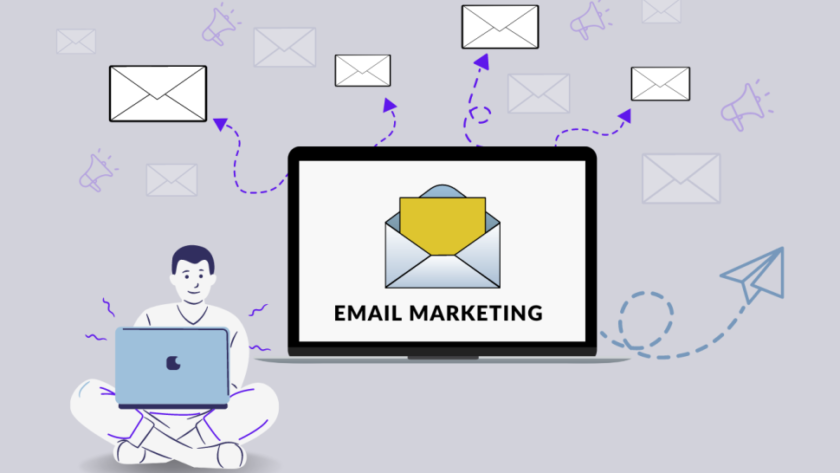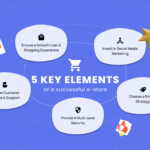Email marketing remains one of the most effective ways to connect with your audience, build relationships, and drive conversions. However, with inboxes often overflowing with messages, standing out in your recipients’ crowded inbox is more challenging than ever. To succeed in email marketing, your campaigns need to be both engaging and impactful. By following best practices, you can create emails that resonate with your audience and boost the effectiveness of your campaigns.
In this article, we’ll explore the best practices for creating engaging email marketing campaigns that capture attention, drive engagement, and deliver results.
1. Build a High-Quality Email List
The foundation of any successful email marketing campaign is a strong email list. A targeted and engaged audience is more likely to open, read, and take action on your emails. Building a high-quality email list is essential for the long-term success of your campaigns.
Use Permission-Based Marketing
- Get Permission: Always ensure that you have permission to send marketing emails. This means using a double opt-in process where subscribers confirm their intent to receive communications from you. This practice ensures a more engaged audience and helps prevent complaints and spam reports.
Segment Your Audience
- Segmentation: Group your subscribers based on shared characteristics, such as demographics, past purchases, or engagement history. By segmenting your email list, you can send targeted and relevant content that resonates with each group. For instance, a clothing brand might send different emails to first-time shoppers, returning customers, or those who abandoned their carts.
Keep Your List Clean
- Maintain an Active and Clean List: Regularly clean your email list by removing inactive subscribers, invalid email addresses, and those who consistently mark your emails as spam. This practice helps maintain a good sender reputation and ensures your emails reach an engaged audience.
2. Craft Compelling Subject Lines
The subject line is the first thing recipients see when they receive an email, and it plays a significant role in whether they open it or not. An engaging subject line can make all the difference in the success of your email campaign.
Be Clear and Concise
- Clarity: Keep your subject line short, clear, and to the point. You want your recipients to understand what your email is about at a glance. Aim for 6-10 words to keep it within the optimal length.
Create Urgency or Curiosity
- Urgency and FOMO (Fear of Missing Out): Use language that encourages recipients to act quickly. For example, “24-Hour Flash Sale” or “Limited Time Offer” can create a sense of urgency. However, make sure your subject line accurately represents the content of your email to avoid disappointing your audience.
Personalization
- Personalize Your Subject Line: Using the recipient’s name or other personalized information in the subject line can make the email feel more relevant and personalized. For example, “John, Your 20% Discount Awaits!” adds a personal touch that can increase open rates.
Avoid Spammy Words
- Be Mindful of Spam Triggers: Certain words and phrases like “free,” “guaranteed,” or “earn money fast” can trigger spam filters and prevent your email from reaching the inbox. Stick to professional language and avoid overused buzzwords that might make your email appear less trustworthy.
3. Design for User Experience and Mobile Optimization
A well-designed email can capture your audience’s attention and keep them engaged. However, design goes beyond just aesthetics; it also involves creating a seamless user experience, especially on mobile devices.
Mobile-Friendly Design
- Optimize for Mobile: With over 50% of emails being opened on mobile devices, it’s crucial to design emails that are mobile-responsive. Use larger fonts, single-column layouts, and easy-to-click buttons to ensure your email is accessible and easy to navigate on any device.
Clear and Simple Layout
- Clean Layout: A cluttered email can overwhelm your readers and cause them to abandon the email quickly. Use a clean and simple layout with plenty of white space to make your email easy to read and visually appealing. Organize your content with headings, subheadings, and short paragraphs.
Effective Call-to-Action (CTA)
- Create Strong CTAs: A clear and compelling call-to-action is essential for driving conversions. Your CTA should stand out and clearly guide recipients toward the next step, whether it’s making a purchase, signing up for a webinar, or downloading a resource. Use contrasting colors for your CTA buttons and make sure they are easy to find.
4. Personalize the Content
Personalization goes beyond just adding a recipient’s name to the subject line. Creating personalized email content based on a user’s preferences, behavior, and history can significantly increase engagement and conversion rates.
Use Dynamic Content
- Tailored Content: Use dynamic content to deliver personalized emails that adapt based on recipient data. For example, if a customer previously purchased a product, you could send them an email recommending related products or offering a discount on their next purchase.
Leverage Behavioral Data
- Behavioral Targeting: Analyze your subscribers’ actions, such as what they click on, what pages they visit, and their purchase history. Use this data to create emails that address their specific interests or needs. A welcome email series for new subscribers or a cart abandonment email for someone who left items in their shopping cart are both great examples of behavioral targeting.
Send Personalized Recommendations
- Product Recommendations: Many e-commerce businesses use personalized product recommendations to drive sales. By analyzing a customer’s past purchases or browsing behavior, you can recommend products they are more likely to be interested in. Personalized recommendations increase the chances of a sale by providing a tailored shopping experience.
5. Provide Valuable and Relevant Content
Your email should offer value to the recipient, whether it’s in the form of useful information, special offers, or entertainment. Engaging content builds trust and encourages recipients to continue opening and interacting with your emails.
Educational and Informative Content
- Offer Solutions: Provide content that addresses your subscribers’ pain points and offers solutions. This could include industry news, expert advice, or how-to guides. For example, a beauty brand might send an email with tips on skincare routines, while a software company might send educational content on optimizing its product.
Exclusive Offers and Discounts
- Reward Subscribers: Exclusive offers or discounts can incentivize subscribers to open and take action on your emails. This could be in the form of a subscriber-only promotion or a limited-time discount. Providing something of value encourages a sense of loyalty and motivates recipients to act.
Entertaining Content
- Engage with Humor or Creativity: Depending on your brand’s voice and audience, adding humor or creativity to your emails can make them more engaging. Don’t hesitate to use creative designs, gifs, or puns that align with your brand personality and resonate with your subscribers.
6. Test and Optimize for Performance
Email marketing is not a one-size-fits-all strategy. To ensure your campaigns are performing at their best, continuous testing and optimization are essential.
A/B Testing
- Test Different Elements: A/B testing allows you to test different versions of your email to see what resonates best with your audience. You can test subject lines, CTA buttons, layout, copy, and sending times. By analyzing the results, you can optimize your emails to improve open rates, click-through rates, and conversions.
Monitor Metrics
- Track Key Metrics: To gauge the success of your email campaigns, monitor key performance indicators (KPIs) such as open rates, click-through rates (CTR), conversion rates, and unsubscribe rates. These metrics provide valuable insights into how your audience is engaging with your emails and help you identify areas for improvement.
Continuous Optimization
- Refine Your Strategy: Use the data from your A/B tests and performance metrics to refine your email marketing strategy over time. Experiment with different approaches, and pay attention to how your audience responds. Email marketing is a dynamic field, and ongoing optimization ensures that your campaigns remain effective.
7. Maintain Compliance and Respect Privacy
In today’s digital landscape, respecting your subscribers’ privacy and complying with email marketing laws is essential. Not only does this ensure your business stays legal, but it also helps build trust with your audience.
Comply with Regulations
- Follow Legal Guidelines: Familiarize yourself with regulations like the CAN-SPAM Act, GDPR (General Data Protection Regulation), and other email marketing laws. Ensure that your emails have a clear unsubscribe option, and avoid sending emails to individuals who have opted out.
Respect Subscriber Preferences
- Allow for Preference Centers: Give your subscribers the option to update their email preferences, such as the type of content they want to receive or how frequently they’d like to hear from you. Respecting their preferences helps maintain a positive relationship and reduces the likelihood of unsubscribes.
Conclusion
Creating engaging email marketing campaigns requires a strategic approach that balances personalization, compelling content, and thoughtful design. By following best practices such as building a quality email list, crafting compelling subject lines, personalizing content, and continuously optimizing your strategy, you can drive higher engagement and achieve better results. Email marketing is a powerful tool for connecting with your audience and driving business success—by following these best practices, you’ll be well on your way to creating email campaigns that deliver value and foster long-lasting relationships with your subscribers.




